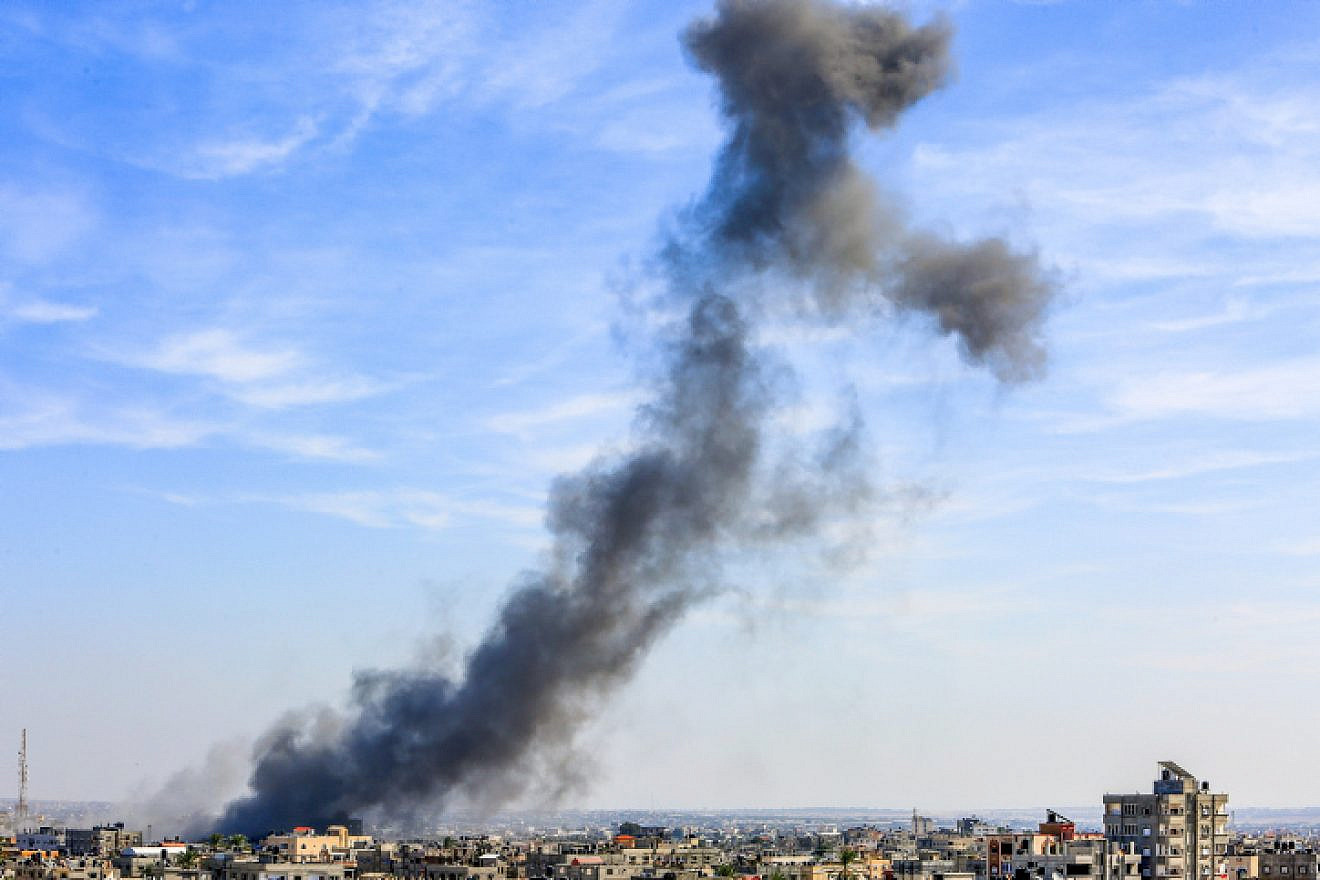Over the past day, Israeli fighter jets struck over 250 Hamas terror targets in the Gaza Strip, including terror infrastructure, operational command centers, tunnel shafts and rocket launchers placed in the heart of civilian areas that fired toward Israeli territory throughout the war, according to the Israel Defense Forces.
In addition, Israeli naval forces struck a Hamas surface-to-air missile launch post in the Khan Yunis area. The post is located adjacent to a mosque and kindergarten, according to the military.
Overnight Wednesday, IDF tanks and infantry units conducted what the military described as a targeted raid in the northern Gaza Strip, as part of preparations for the next stage of combat. The Givati infantry brigade led the raid, and soldiers located and struck terrorists, terror infrastructure, and anti-tank missile launching posts, according to the IDF.
All Israeli ground forces exited Gaza at the end of the operation, according to the IDF.
IDF Spokesperson Rear Adm. Daniel Hagari said on Wednesday evening that the war will be long and called for patience, describing this patience and resilience as part of Israel’s national goal “to destroy Hamas’s leadership infrastructure and capabilities and return the hostages.”
“Every attack in Gaza improves our situation in the next stages of the war,” said Hagari. “We attack around the clock any operational target or underground when we get intelligence,” he said, adding that the elimination of senior Hamas leadership was a top priority.
IDF ground forces are deployed in a broad manner around Gaza, said Hagari, who warned the Israeli public not to be complacent.
“We estimate we will see rocket fire in various locations,” he cautioned.
“In the north we eliminated a number of terror squads—everywhere we see them. One squad was en route to attack an IDF unit; this is happening all of the time. Those who send squads against us will pay a very heavy price,” he said.
On Wednesday, IDF forces identified and targeted another terrorist cell in the area of Arab al-Aramshe on the Lebanese border. Later in the day, Israeli Air Force jets struck a number of Hezbollah military targets in Lebanon.
Also on Wednesday IDF forces struck a terror cell that had fired an anti-tank missile at IDF forces operating in the area of Avivim in northern Israel.
A terrorist cell suspected of attempting to carry out a shooting attack from Lebanon into northern Israel near Moshav Dovev was also struck by the IAF.
Hezbollah chief Hassan Nasrallah, who recently met in Beirut with Hamas deputy head Salah al-Arouri and Palestinian Islamic Jihad chief Ziad Nakhaleh, sent a letter to Hezbollah members in which he addressed the Israel-Hamas war for the first time.
In it, Nasrallah wrote, “In line with the reality of the ongoing battle against the Zionist enemy since October, and with the sacrifices for the all-powerful Allah on our borders, Lebanon is with occupied Palestine. Please see all martyrs from October 7 as martyrs on the way to Jerusalem,” Israeli media reported on Wednesday, citing the Hezbollah-affiliated Al Manar television channel.
Since Oct. 7, the IDF has notified the families of 309 families of fallen soldiers, and is aware of 222 people being held by Hamas in Gaza.
“The national effort to return hostages is at the top priority and we will continue to make civilian, intelligence and operational efforts” to this end, said Hagari on Wednesday. “Families will be updated on all new information,” he added.
Addressing recent comments by Turkish President Reccep Tayyip Erdogan, U.N. General Secretary António Guterres and Jordan’s Queen Rania, Hagari said that such statements “obligate us to make national effort to reflect the justice of the [war effort].”
“What Hamas did on Oct. 7 is tied only to horror and death. All they wanted to achieve is horror and death. Those who don’t accept this will get what we got in their backyard,” he added.
Humanitarian aid consisting of food, water, and medicines are continuing to flow into southern Gaza via Egypt, with U.N. and U.S. assistance.


























